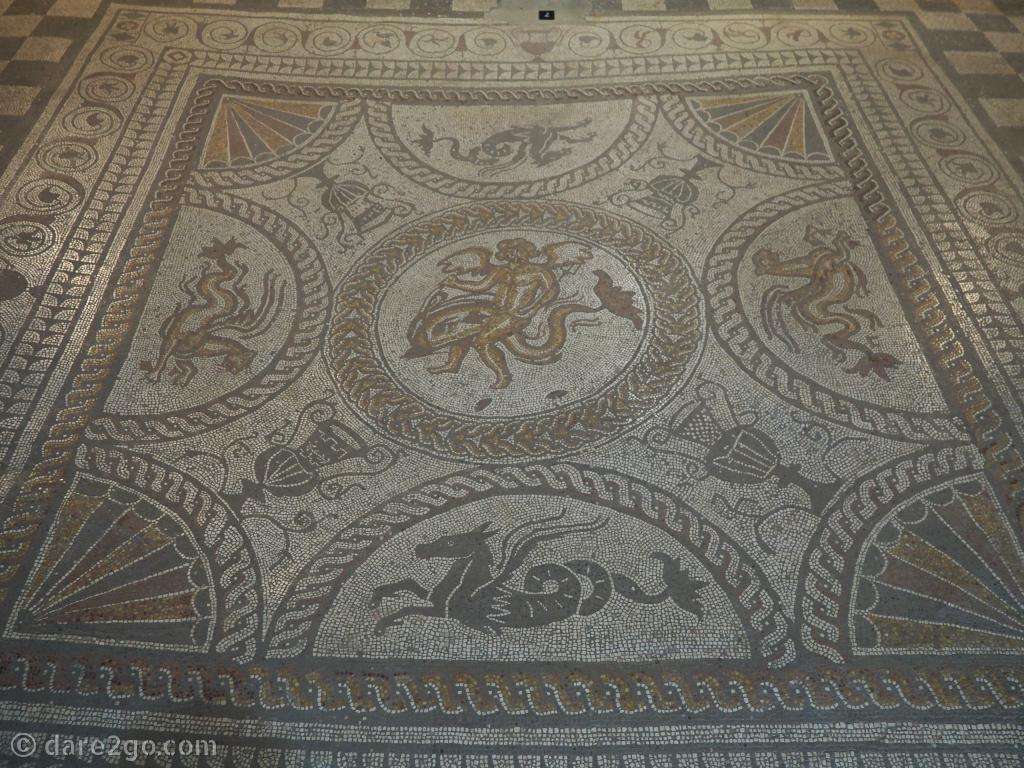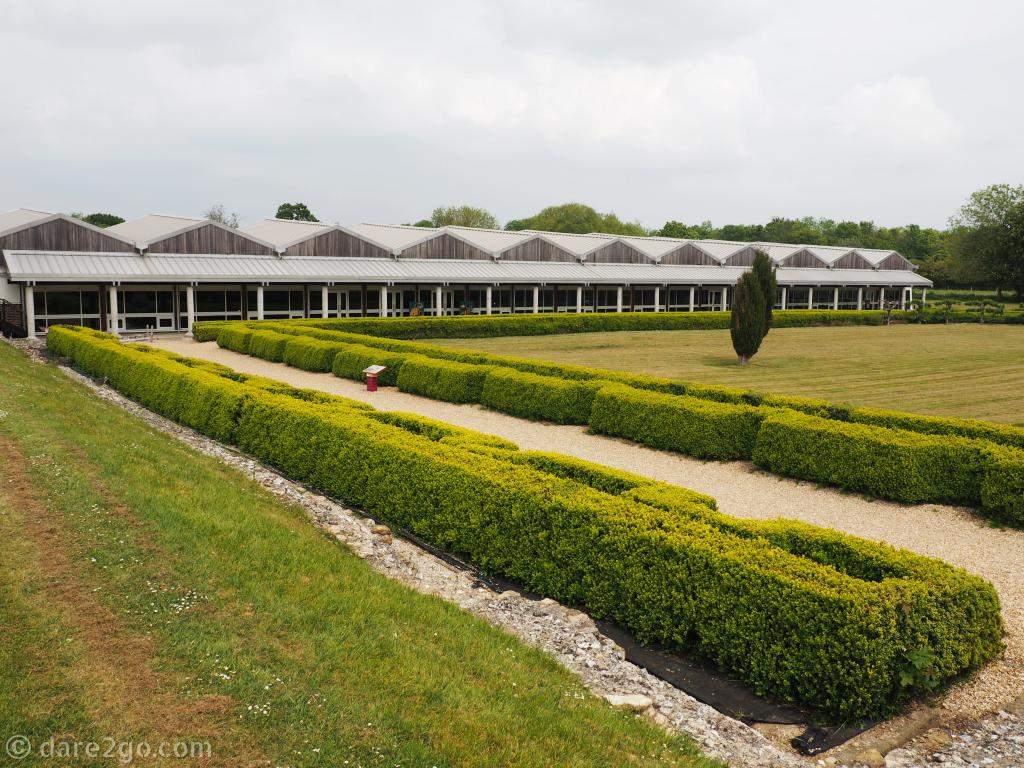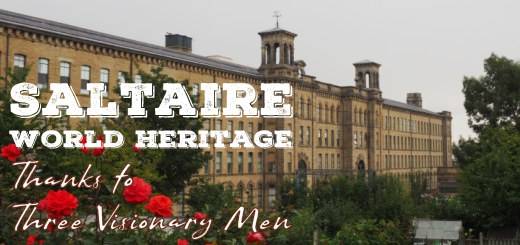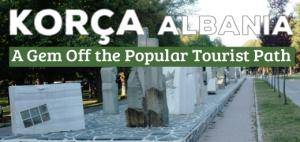Visit the Superlative Fishbourne Roman Palace in Sussex
- Pinterest325
- Facebook0
- Twitter2
- Reddit0
- Flipboard0
- Email0
- Buffer10
- 337shares
- Like
- Digg
- Del
- Tumblr
- VKontakte
- Buffer
- Love This
- Odnoklassniki
- Meneame
- Blogger
- Amazon
- Yahoo Mail
- Gmail
- AOL
- Newsvine
- HackerNews
- Evernote
- MySpace
- Mail.ru
- Viadeo
- Line
- Comments
- Yummly
- SMS
- Viber
- Telegram
- Subscribe
- Skype
- Facebook Messenger
- Kakao
- LiveJournal
- Yammer
- Edgar
- Fintel
- Mix
- Instapaper
- Copy Link
If you’re looking for interesting things to do in West Sussex, you can’t go past Fishbourne Roman Palace. It is said to be the ‘largest Roman residence known north of the Alps’.

Superlatives to discover in Sussex: the largest Roman-style Villa in Great Britain with the oldest collection of mosaics and the first formal Roman garden. (view across the garden to the museum gallery and excavation hall) [photo credit ]
But that’s not the only superlative that applies:
- It is the largest Roman villa discovered in Great Britain so far.
- It has the largest collection of mosaics in situ in the UK.
- It boasts some of the oldest Roman mosaics in Britain.
- The garden was probably the first formal Roman garden in Britain.
- The design is Roman rather than Roman-British, which makes it unique in Roman Britain.
What you will find in this article:
Discovery of the Fishbourne Roman Palace
The discovery and excavation of the site is an exciting story in itself. In 1960, Aubrey Barrett was digging a trench for a new water main when he uncovered a mosaic.
Finding Roman relics was no surprise; the locals knew there were Roman remains in the area. But finding a Roman villa of this size was very exciting.

Here we see how the water pipe trench, responsible for the discovery of the Fishbourne Roman Palace, cut off the corner of one of the floor mosaics.
Barry Cunliffe was an archaeology undergraduate when the site was discovered. He had made the decision to follow this path at 9 years of age when a Roman site was unearthed on his uncle’s farm. He supervised the excavation of the palace at Fishbourne throughout the 60s.
His team consisted mostly of volunteers. They came from around Britain, but also from abroad – France and the USA predominantly. Many were archaeology students, while others were just interested in being a part of this mammoth task. As the size of the building became obvious, they started calling it the Fishbourne Roman Palace. (It’s larger than Buckingham Palace!) The name stuck.
But without Ivan Margary, the site would not have been preserved. Margary was a historian and is remembered primarily for his work on the Roman Roads of Great Britain. He wrote numerous books on the subject, as well as developing a catalogue system for them. But, according to an information board in the Fishbourne Museum,
Margary was the quintessential 20th-century philanthropist
Initially, the excavation team was only recording the site, as the land was already marked for housing development. In 1962, Margary bought the site and gifted it to the Sussex Archaeological Society. He also paid for a building to protect the excavated ruins.
But he didn’t save it all: when you visit Fishbourne Roman Villa, you will see about half the original site. The rest is under the suburban houses next door. Some are in private hands, others public. There are still those who hope to see the day when the whole site is completely excavated.
It was opened to the public in 1968.
Fishbourne Roman Palace Facts

This Hypocaust – underfloor heating – was begun in 270 AD. That particular renovation was never finished because the Fishbourne Palace burnt down.
The ancient mosaic in a trench led to the discovery of a Roman structure that is unique in Britain. Its design is Roman rather than Roman-British and has been compared in style and size to Nero’s Golden Palace in Rome. This is even more surprising when the date of construction is taken into account: the Palace was built around 75AD, just 3 decades after the Romans arrived in Great Britain.
It certainly must have been home to a very important person. Who this person was is still a matter of conjecture; the most likely candidate is Tiberius Claudius Cogidubnus (or Togidubnus), a Celtic king who governed on behalf of Rome in Noviomagus Reginorum (now Chichester).
The complete Roman residence consisted of four wings surrounding a formal courtyard garden of 75m x 100m. The Fishbourne Roman Palace garden was probably the first formal Roman garden in the UK. The complex took 5 years to complete.
In the following 200 years, it was renovated and repurposed several times. The final renovation, begun around 270, was never completed. The palace was destroyed by fire in 280 and subsequently abandoned.
Fishbourne Museum Gallery

A 3-d model of the Roman Villa, found in the Fishbourne Museum.

This illustration shows how the Fishbourne Roman Palace may have looked when it was first completed.
At the entrance to this Roman Villa near Chichester, you will find the museum gallery. You are encouraged to wander through the exhibition while waiting for the start of your guided tour. It houses a collection of Roman objects uncovered during excavations of the Fishbourne Roman Palace. There are pieces of tiles, fragments of frescoes, and even a piece of a sculpted head that is almost certainly Emperor Nero as a teenager – and 1 of only 3 in the world.
There are also many information boards describing the process of constructing the first Roman Palace, and the subsequent alterations and renovations.
Fishbourne Palace Mosaics
On the tour of the North Wing, you will see some of the largest collection of Roman mosaics in Great Britain – most of them in their original positions. There are several more still buried under the west wing for their protection. Because of the early construction of the Fishbourne Palace, you will also be seeing some of the oldest Roman mosaics in Britain.
The first mosaics laid were monochrome – black tile pattern on a white background. During subsequent renovations, some colour was introduced as new floors were laid, sometimes directly over the originals.

The damaged Medusa Mosaic, a polychrome 2nd-century floor, shows a fragment of the underlying 1st-century black-on-white floor, with a Greek Key pattern.
While the tesserae were cut from local stone, the original mosaicists almost certainly came from Italy. They were very skilled, and they trained locals in their craft. Our guide pointed out examples that showed quite a difference in the quality of the floors, which were laid by the trainees.
The original palace had at least 100 rooms and most of them had mosaic floors. Just over a quarter of them have been recovered – in various states. The most impressive to be seen is Cupid on a Dolphin, known familiarly as the Dolphin Mosaic.

The Cupid on a Dolphin mosaic is in near perfect condition. It’s from the 2nd century and is therefore polychromatic.
Fishbourne Palace Garden

Here is the majority of the site that you can see when you visit Fishbourne Roman Palace today. In the background is the large covered hall that protects the excavation of the North Wing.
The northern half of the formal garden has been reconstructed. They made use of field evidence retrieved during the excavation of the site. The box hedges that give form to the garden were planted into the original bedding trenches. Most of the plantings were based on known planting styles found in contemporary literature, like the famous letters of Pliny the Younger.
Walking around this huge formal garden, you can just imagine how impressive it would have been when the other half was there, surrounded by the complete Roman Palace.
15 Fascinating Things to Do and See in Merida, Spain
A Diverse History of Wales – in Ruins
Visit Fishbourne Roman Palace

Inside the excavation hall of the Roman Palace, with the hypocaust in the foreground and mosaics running off into the distance.
We recommend a visit to the Fishbourne Roman Palace & Gardens: put it right up at the top of your list of places to visit in West Sussex. A free guided tour of the site is offered by volunteer enthusiasts, who are members of the Sussex Archaeological Society. The volunteer takes you through the North Wing, offering information and telling stories that make the Roman Villa come alive.
The Fishbourne Roman Palace is located in the village of Fishbourne, near Chichester, West Essex in England’s south-east.
The site was closed for several months in 2020 due to the Covid-19 pandemic. The Sussex Archaeological Society, which owns the site is a charity and relies on visitors and donors to keep this important site maintained. Please visit if you can. Fishbourne Roman Palace opening times can be found on the Society’s website.
Please share this post on Pinterest to show your friends or to remember for later:



- Pinterest325
- Facebook0
- Twitter2
- Reddit0
- Flipboard0
- Email0
- Buffer10
- 337shares
- Like
- Digg
- Del
- Tumblr
- VKontakte
- Buffer
- Love This
- Odnoklassniki
- Meneame
- Blogger
- Amazon
- Yahoo Mail
- Gmail
- AOL
- Newsvine
- HackerNews
- Evernote
- MySpace
- Mail.ru
- Viadeo
- Line
- Comments
- Yummly
- SMS
- Viber
- Telegram
- Subscribe
- Skype
- Facebook Messenger
- Kakao
- LiveJournal
- Yammer
- Edgar
- Fintel
- Mix
- Instapaper
- Copy Link













